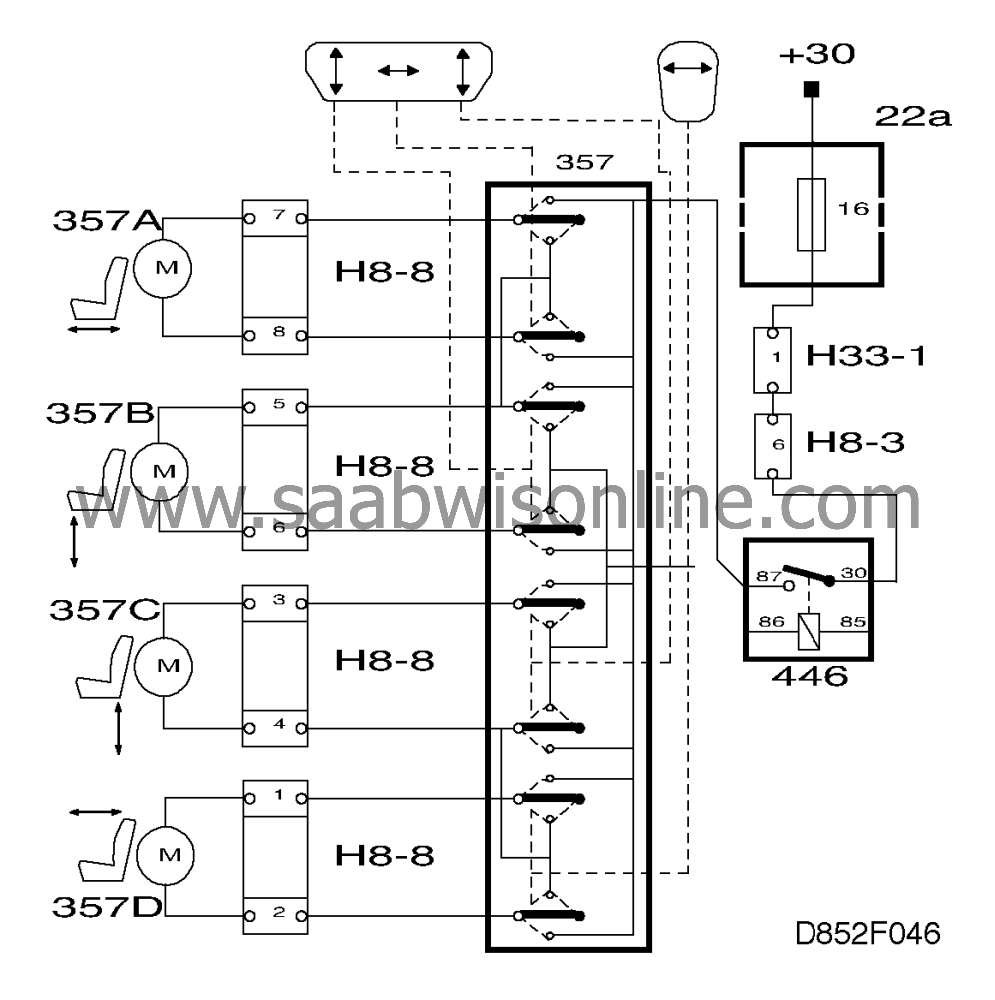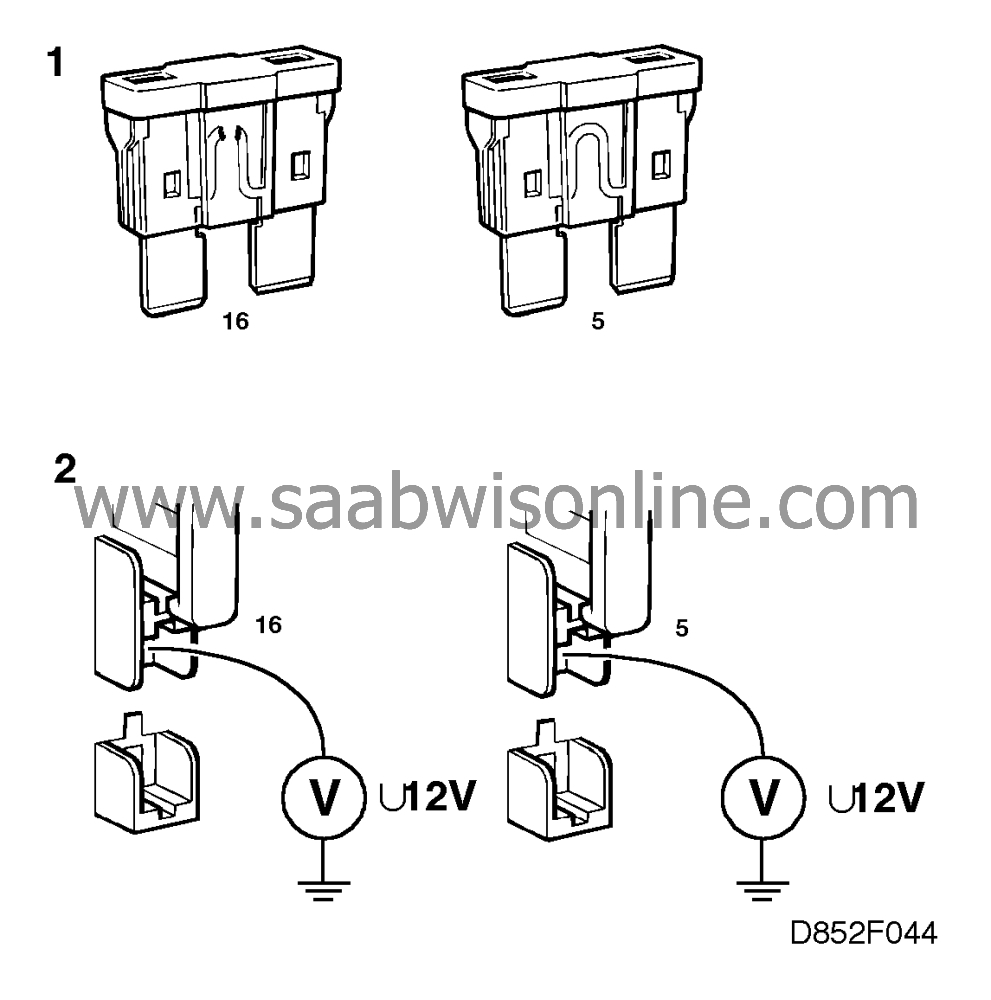Fault diagnosis, electrically adjustable seat without memory
|
|
Fault diagnosis, electrically adjustable seat without memory
|
The front seats of the car can be adjusted by means of switches on the outside of each seat. Electric motors move the seat in a fore-and-aft direction, change the height of the seat cushion at front and rear, and change the backrest rake angle.
When the ignition switch is in the Drive position and/or when any door is open, switch 357 on the driver's seat is supplied with power via fuse 16. Switch 358 on the front passenger's seat is supplied with power via fuse 5. Switch 357 (driver's seat) controls the following electric motors:
|
•
|
Electric motor 357A moves the seat in a fore-and-aft direction.
|
|
•
|
Electric motor 357B raises and lowers the front of the seat.
|
|
•
|
Electric motor 357C raises and lowers the rear of the seat.
|
|
•
|
Electric motor 357D changes the backrest rake angle. Switch 358 and electric motors 358A-D are used to control and move the front passenger's seat in the same manner.
|
An ISAT is not used for diagnosing faults on seats without memory. The methods described below should be used instead. Electric operation of the seats is activated when the ignition switch is in the Drive position and/or any door is open.
|
1.
|
Check that fuses 16 (driver's seat) and 5 (front passenger's seat) are intact and also whether they are live.
|
|
2.
|
Check whether switches 357 and 358 are supplied with current.


|
|
3.
|
Activate the relevant switches to check whether the motors are supplied with power.
|
|
4.
|
Check the connectors, wiring and ground connections.
|
|
5.
|
Check the relay in the same way as for the seat with memory,
 .
.
|


 .
.



